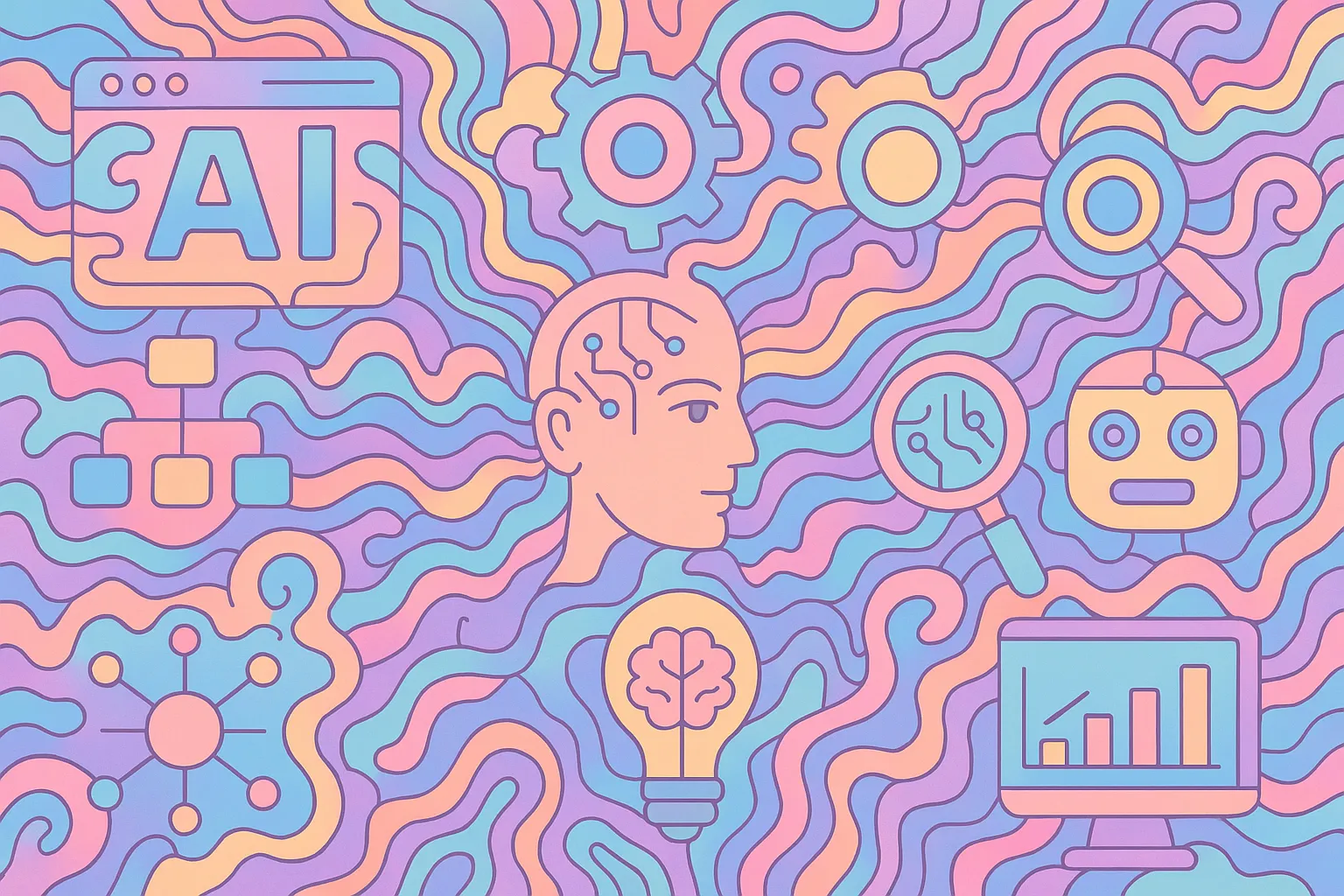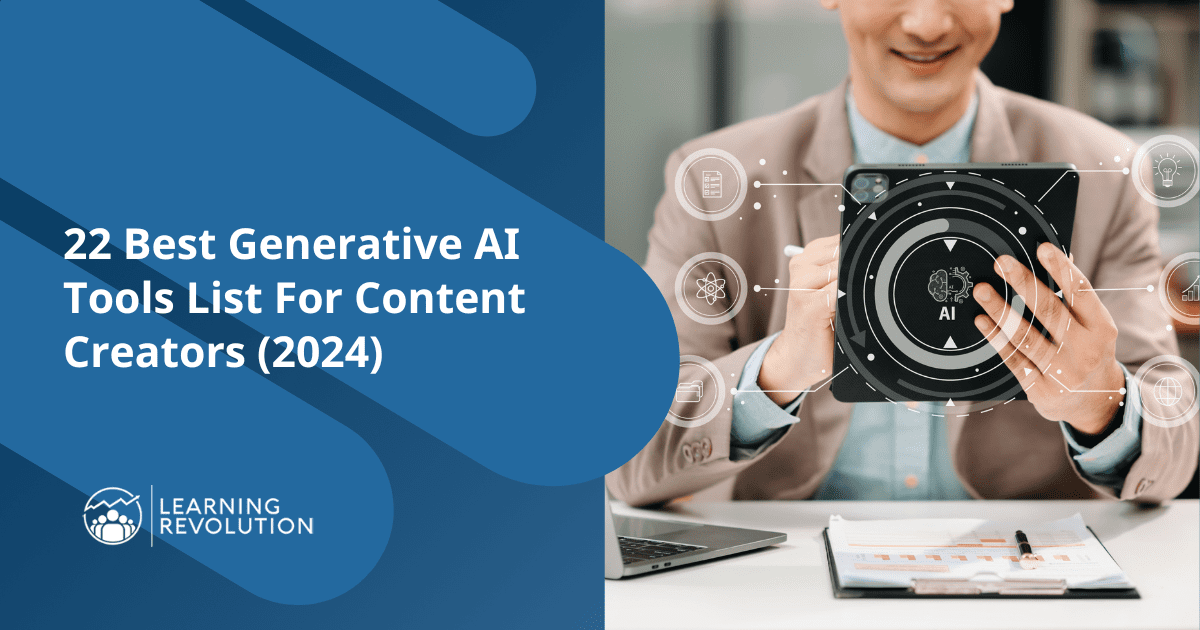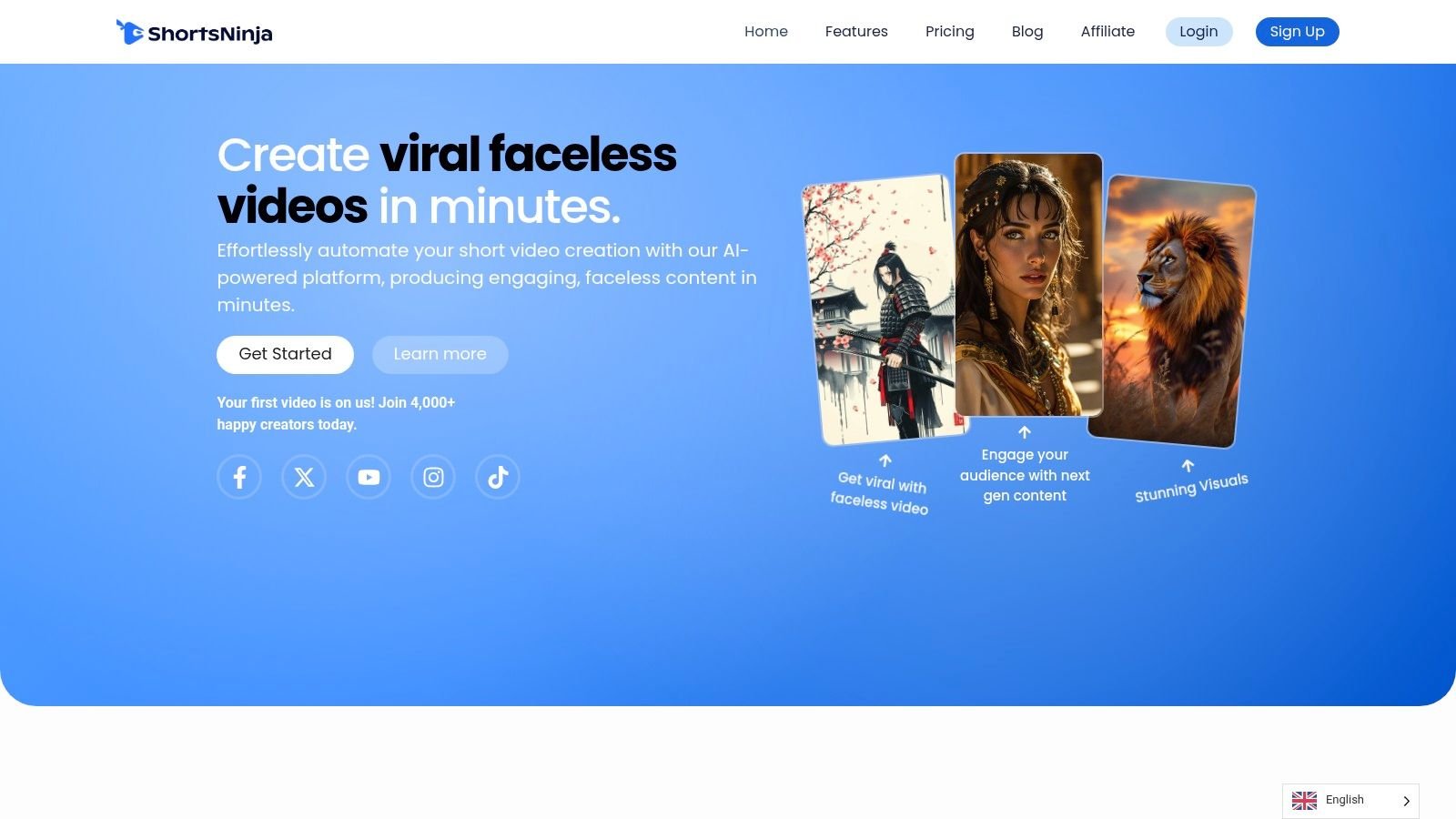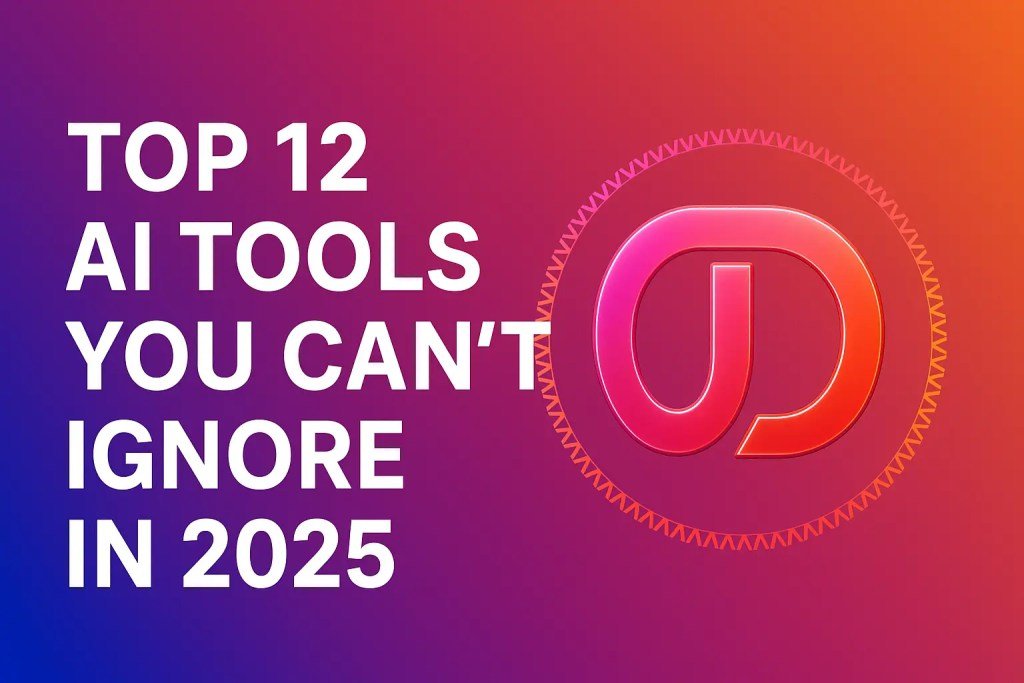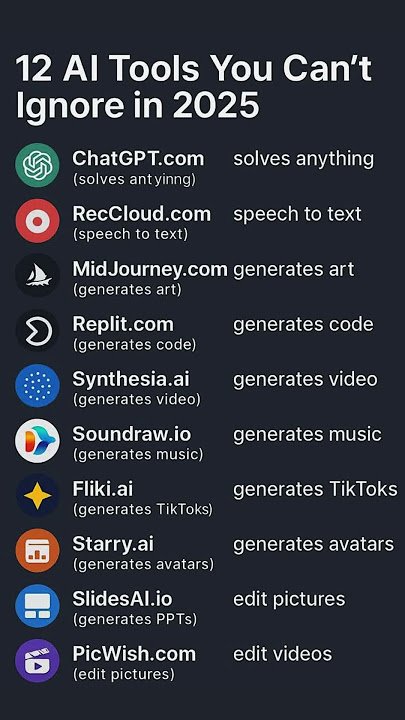The Best AI Tools for Creators in 2025 — Shortlist You Can’t Ignore
As we enter 2025, AI tools for creators have transformed dramatically, enhancing creativity and efficiency. Here’s a shortlist of essential AI tools for creators this year:
- DeepArt Studio: Transforms photos into artworks using famous painters’ styles with advanced neural networks, crucial for digital artists (Source A).
- Synthesia: Creates professional-grade videos using AI avatars from text input, ideal for quick and scalable content production (Source B).
- Jasper AI: An advanced writing assistant that generates high-quality content quickly, perfect for meeting tight deadlines (Source C).
- RunwayML: Automates video editing with Machine Learning tools like real-time object recognition and motion tracking, essential for filmmakers (Source D).
- AIVA: Composes original soundtracks using AI, helping musicians expand their creative repertoire efficiently (Source E).
- DALL-E 3: Generates high-resolution images from text descriptions, offering unique visuals for various projects (Source F).
These tools not only enhance creativity but also empower creators to explore new dimensions, crucial for staying competitive in 2025.
AI Tools for Content Creation
AI tools have become essential in content creation, enhancing productivity, creativity, and precision by 2025. AI writing assistants like ChatGPT and Bard help creators with content ideation and drafting, making them valuable for bloggers and journalists (Source 1). AI-driven personalization tools, such as Persado and Phrasee, tailor content to individual preferences using audience data, ensuring marketing content connects deeply with its audience (Source 2). Multimedia creation is revolutionized by AI tools like RunwayML and DALL-E 3, which simplify the generation of high-quality images and videos (Source 3). SEO tools like Clearscope and SurferSEO optimize content for search engines, helping it become discoverable by target audiences (Source 4). Automated editing tools, including Grammarly and ProWritingAid, offer advanced grammar checks, style guides, and plagiarism detection (Source 5). In summary, AI tools in 2025 integrate seamlessly into the creative process, enhancing quality and engagement while saving time.
Text Generation and Editing
By 2025, text generation and editing tools have become essential for creators, significantly boosting creativity, productivity, and efficiency. These AI-driven tools assist in content creation, from drafting articles to refining prose. OpenAI’s GPT-5 stands out for its ability to generate coherent and contextually relevant text across genres, aiding writers with ideation and drafting. Grammarly’s AI editor has evolved to offer sophisticated style suggestions and tone adjustments, tailoring writing to specific audience preferences, crucial for marketers aligning content with brand voice. Jasper AI provides specialized support for marketing and sales content, generating persuasive copy and integrating seamlessly with content management systems. Copy.ai enhances collaborative writing with real-time AI-enhanced editing, ensuring quality and consistency. Sudowrite aids authors with plot development and character creation, offering creative prompts for storytelling. In 2025, these tools are indispensable for creators, providing functionality that enhances the creative process across various fields.
Image and Graphic Design
By 2025, AI-driven tools are revolutionizing image and graphic design, enhancing creativity and efficiency. Key players include:
- Adobe Sensei: Integrated across Adobe’s suite, it automates tasks like photo editing and tagging, allowing designers to focus on creativity with smart suggestions.
- Canva AI: Known for its user-friendly interface, Canva now offers AI-driven design suggestions and automatic layout generation, ensuring brand consistency.
- DeepArt: This tool transforms photos into artworks using neural networks. Enhanced algorithms allow faster processing and intricate style transfers.

Kaynak: www.synthesia.io - RunwayML: Offers a platform for using machine learning in design, with intuitive interfaces and expanded model libraries for seamless creative workflows.
- Daz 3D: Simplifies 3D graphics with AI-powered character creation and animation, making high-quality 3D content more accessible.
- Artbreeder: Uses GANs for collaborative image creation, with refined controls over style and composition, popular among concept artists.
These tools not only streamline traditional processes but also explore new creative possibilities.
Video Production and Editing
By 2025, video production and editing have advanced significantly with AI tools that simplify and enhance creativity. These tools cater to various creators, from independent filmmakers to large studios, offering features that streamline editing while ensuring high-quality outputs.
Automated Editing Suites: AI-driven software can automatically sift through raw footage, select the best clips, and assemble them into sequences, applying transitions and effects. These tools replicate previous editing styles, ensuring consistency across projects.
Real-time Collaboration: Cloud-based AI platforms enable teams to collaborate in real-time, regardless of location. They recommend edits, suggest improvements, and flag issues, accelerating production and enhancing creativity.
Advanced Color Grading: AI revolutionizes color grading with intuitive interfaces that adjust settings based on mood or style, making the process accessible to creators of all expertise levels.
Intelligent Sound Design: AI tools enhance audio by removing noise, balancing levels, and generating sound effects. They analyze video mood and pacing to suggest soundtracks, ensuring cohesive audio-visual experiences.
Deepfake and CGI Integration: AI simplifies CGI and deepfake creation, allowing for creative freedom and innovative storytelling with minimal effort. These tools significantly reduce the time and effort needed for high-quality video production.
AI Tools for Social Media Management
In the evolving social media landscape, AI tools are essential for creators to efficiently manage their online presence, enhance engagement, and optimize content. By 2025, several AI-powered tools have emerged as leaders in this field:
- Sprout Social uses AI-driven analytics and social listening to automate post scheduling and provide insights into audience demographics. Its NLP technology analyzes sentiment, allowing real-time strategy adjustments.
- Hootsuite Amplify offers advanced content curation with AI algorithms that identify trending topics and suggest optimal posting times, maximizing audience reach and engagement.

Kaynak: www.learningrevolution.net - Buffer Analyze leverages AI to provide actionable insights and predict trends, helping creators adapt strategies proactively.
- Later’s AI-Powered Visual Planner uses machine learning to suggest content layouts and predict post success, aiding data-driven visual content strategies.
- Agorapulse’s AI Inbox Assistant streamlines social media interactions by categorizing messages and automating responses, freeing up time for strategic tasks.
- SocialBee’s AI Content Generator helps maintain a consistent posting schedule by generating content ideas based on trends and competitor analysis.
These AI tools are vital for creators to optimize their social media strategies effectively.
Content Scheduling and Automation
In 2025’s digital landscape, creators increasingly use advanced AI tools for content scheduling and automation, enhancing productivity by focusing on content creation over operational tasks. Buffer AI stands out, utilizing machine learning to analyze audience engagement and suggest optimal posting times and content types, maximizing reach and engagement. It also features automatic reposting of high-performing content. Hootsuite Pro AI offers predictive analytics to forecast trends and recommends content adjustments, with cross-platform posting that customizes posts for different platforms, optimizing performance. Later AI combines automation with personalization, providing AI-driven content suggestions based on brand voice analysis, maintaining unique style and tone. Its drag-and-drop calendar interface simplifies planning. CoSchedule AI focuses on content lifecycle management, offering scheduling, automation, and performance tracking, beneficial for managing multiple projects across platforms. These tools provide efficiency and insight, ensuring content reaches the right audience while maintaining creators’ unique voices, making them indispensable for staying ahead in the digital age.
Engagement and Analytics
In 2025’s digital landscape, engagement and analytics tools are crucial for creators to refine strategies and maximize audience interaction. Tools like AudienceAI use machine learning to analyze viewer behavior, offering insights on content engagement and viewer drop-off points, enabling content adjustments for better retention (Source 1). EngageMetrics provides predictive analytics to forecast engagement trends, helping creators tailor content to emerging demands and integrate with social media for comprehensive engagement views (Source 2). SocialPulse offers sentiment analysis and tracks real-time reactions, aiding creators in refining messaging for a more engaging experience (Source 3). InsightLoop combines engagement tracking with community management, allowing creators to interact with audiences and foster loyal communities (Source 4). These tools empower creators to make data-driven decisions, enhancing audience interaction and content effectiveness, essential for sustained success in the evolving digital content landscape.
AI Tools for Music and Audio Production
In 2025, AI tools have transformed music and audio production, offering creators new creative possibilities and streamlined processes. Key tools include:
- AIVA: AIVA uses deep learning to compose music across genres, ideal for custom soundtracks in films, games, or personal projects. It mimics different styles, producing innovative compositions aligned with creators’ visions.
- Amper Music: Known for its user-friendly interface, Amper Music allows quick music composition with AI-driven generation, enabling tempo, mood, and instrumentation adjustments.
- LANDR: Initially a mastering service, LANDR now offers AI tools for music production and collaboration, providing professional mastering and audience engagement insights.
- Endlesss: This platform enhances real-time collaborative music creation, using AI to suggest chord progressions and rhythms, supporting spontaneous creativity.
- Vochlea Dubler: Converts voice to MIDI, allowing vocalists to control instruments in real-time, capturing musical ideas swiftly.

Kaynak: shortsninja.com - iZotope Ozone: Utilizes AI for mastering, offering EQ, dynamics, and stereo imaging recommendations, ensuring polished final products.
These tools democratize music production, making high-quality resources accessible to more creators, with AI continuing to expand possibilities in the industry.
Composition and Sound Design
As of 2025, AI-powered tools have transformed composition and sound design, enhancing creativity and productivity. Key tools include:
- Soundraw: This tool allows musicians to generate unique, royalty-free music tailored to specific needs, offering customization of elements like tempo and mood for bespoke soundtracks.
- Amper Music: It provides an intuitive platform for creating music, assisting users with AI-driven suggestions and adaptive learning features to align with their creative vision.
- AIVA: Known for composing emotional and complex pieces, AIVA uses deep learning to replicate classical compositions, making it ideal for projects requiring nuanced music.
- LANDR: Initially focused on AI-driven mastering, LANDR now offers automated mixing and collaboration features, facilitating high-quality audio production.
- Splice AI: By analyzing user preferences, Splice AI recommends samples and loops, streamlining workflow and encouraging experimentation.
These tools represent the evolving AI landscape, equipping creators with sophisticated tools to produce innovative audio experiences.
Mixing and Mastering
By 2025, AI tools have transformed music production, particularly in mixing and mastering, offering unprecedented efficiency and capabilities. LANDR, an AI-driven platform, allows creators to achieve professional-quality sound effortlessly by using algorithms to tailor mastering techniques to specific genres and styles. This enables even novice producers to produce polished results without extensive technical knowledge.
iZotope’s Ozone, a longstanding industry staple, has evolved with AI enhancements like Master Assistant, which customizes a signal chain for balanced sound. Its deep learning-based adjustments are invaluable for professionals and newcomers alike. Neutron by iZotope provides AI-assisted mixing, analyzing entire mixes to suggest level balancing and EQ adjustments, streamlining the process and allowing creators to focus on artistic aspects.
AI technologies, like Sonible’s smart:EQ 3, dynamically adjust EQ settings in real-time, benefiting live sound engineers and producers on tight deadlines. By 2025, these AI tools democratize access to high-end production, empowering creators to produce industry-standard tracks with ease and precision.
AI Tools for Marketing and Branding
In the evolving digital marketing landscape, AI tools are crucial for enhancing strategies and engagement. By 2025, these tools will be more advanced, offering streamlined processes. ContentBot is a standout AI tool, generating high-quality marketing content, beneficial for small businesses lacking large marketing teams. It ensures consistent messaging across platforms. Phrasee optimizes language for digital content using natural language processing, enhancing copy to improve engagement and ROI. For visual branding, Canva’s AI Design Suite simplifies design with AI-suggested elements, aiding creators in producing appealing content. HubSpot’s AI-powered CRM automates customer interactions, offering predictive lead scoring and personalized communication to convert leads. Brand24 provides real-time insights into brand perception, helping maintain a positive image and manage PR crises. These AI tools offer innovative solutions for marketers, enhancing branding efforts and audience connection.
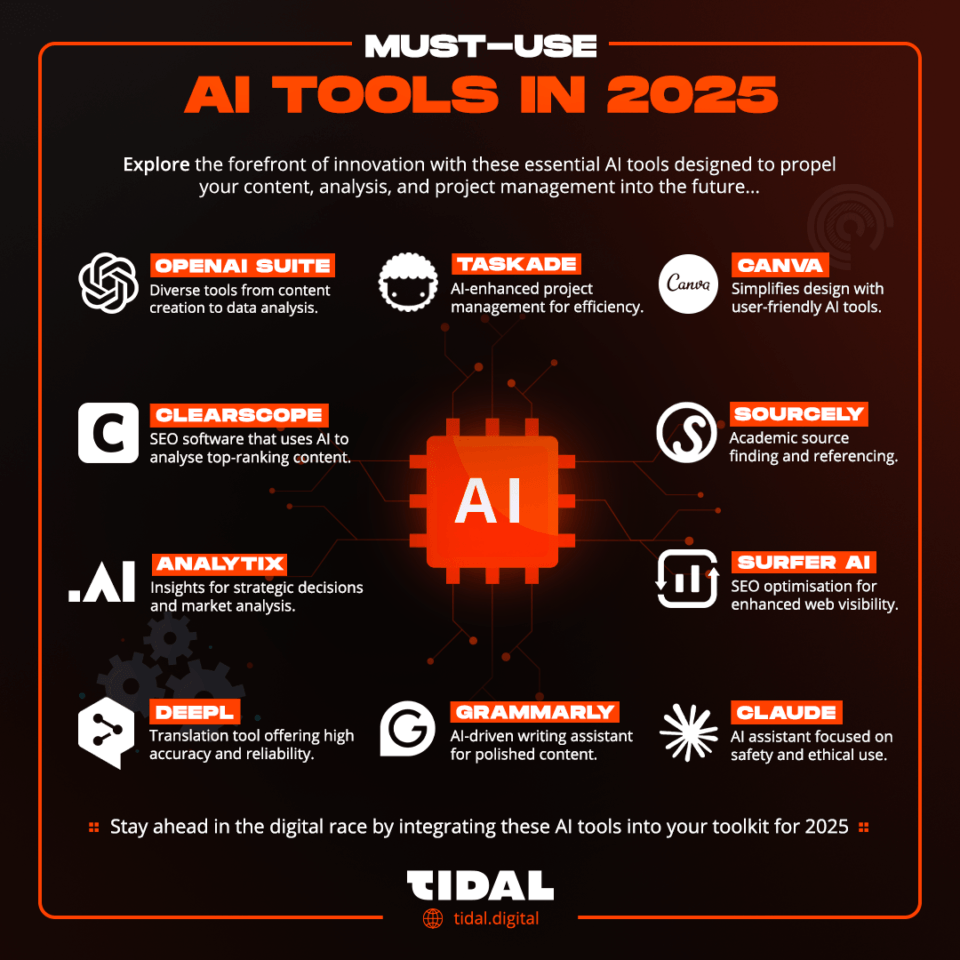
Audience Analysis
Understanding your audience is essential for creators using AI tools in 2025. The content creation landscape is evolving, and AI provides insights into shifting audience demographics, preferences, and behaviors.
Demographic Insights and Segmentation: AI tools in 2025 can segment audiences by age, gender, location, and income, using vast datasets and machine learning to identify patterns (Source 1). This helps creators tailor content to engage specific demographics effectively.
Behavioral and Psychographic Profiling: AI delves into complex audience characteristics, analyzing social media, browsing, and purchasing data to build detailed profiles (Source 2). This allows creators to identify niche interests and trends, staying ahead of the curve.
Real-Time Analytics and Feedback: AI offers real-time audience analysis, providing immediate feedback on content performance, including engagement and sentiment metrics (Source 3). This enables creators to adapt strategies quickly for maximum impact.
Predictive Analytics for Future Trends: AI forecasts future audience behaviors by analyzing historical and current trends (Source 4). This helps creators plan content strategies aligned with anticipated trends, like a predicted rise in sustainable living interest among Gen Z.
Cultural and Linguistic Adaptation: AI’s language processing capabilities allow creators to adapt content culturally and linguistically, ensuring it resonates globally (Source 5).
In summary, AI tools enhance audience analysis, empowering creators to produce targeted, engaging content and succeed in a competitive environment.
Campaign Optimization
By 2025, AI has become crucial for digital marketing campaign optimization, offering creators advanced tools to refine their strategies. AI-driven predictive analytics forecast trends and consumer behaviors, enabling creators to tailor campaigns for maximum return on investment. Real-time Data Analysis tools monitor performance and suggest adjustments, allowing swift strategy pivots to optimize engagement and conversions. AI has also transformed A/B testing by running simultaneous tests and quickly identifying the best-performing variations, reducing time and costs. Personalization is enhanced, with AI delivering tailored content for deeper audience connections and dynamically adjusting content for relevance. Additionally, AI optimizes multichannel campaigns by integrating data from various platforms, providing a complete view of the customer journey and enabling seamless, cohesive campaigns. In summary, AI tools in 2025 empower creators to predict, analyze, and personalize marketing efforts, keeping them competitive in the digital landscape.
AI Tools for Virtual Reality and Augmented Reality
As we approach 2025, AI’s integration with Virtual Reality (VR) and Augmented Reality (AR) is transforming these fields, offering new avenues for Innovation and enhanced user experiences. Key AI tools reshaping VR and AR include:
- NVIDIA Omniverse: A versatile platform for creating metaverse applications, Omniverse uses AI to streamline the development of interactive virtual worlds. It enables real-time collaboration, enhancing simulations and rendering for realistic environments, crucial for VR and AR developers (Source A).
- Unity MARS: This tool revolutionizes AR development by incorporating AI to manage complex interactions and environmental data, creating contextually aware applications that adapt to the physical world. It’s particularly useful in retail, education, and entertainment (Source B).
- Vuforia: Known for its AI-powered features, Vuforia simplifies AR app development by recognizing and tracking objects and surfaces, enhancing precision and reliability in AR experiences (Source C).
- Google ARCore: Utilizes AI for building AR experiences on Android, with machine learning to detect surfaces and understand environmental conditions, aiding in creating immersive applications (Source D).

Kaynak: i0.wp.com - Microsoft Mesh: An AI-driven platform for mixed reality collaboration, Mesh allows users to interact across distances as if they were co-located, essential for developing multi-user VR and AR experiences (Source E).
VR/AR Content Creation
As of 2025, VR/AR content creation is more accessible and innovative, thanks to advanced tools that enhance and democratize the process. Unity’s MARS offers an intuitive platform for creating mixed reality applications, with simulation capabilities that streamline development and improve reliability. Unreal Engine remains a leader with its high-fidelity graphics and real-time rendering, alongside a visual scripting system accessible to non-programmers. Open Brush, formerly Tilt Brush, provides artists a virtual space to create 3D paintings, popular for its user-friendly interface. Adobe Aero allows designers to create AR experiences without coding, integrating seamlessly with other Adobe tools for a smooth workflow. Additionally, AI-driven tools like Masterpiece Studio Pro simplify 3D modeling, reducing technical barriers and empowering creators to focus on their vision. These tools collectively usher in a new era of VR/AR content creation, enabling creators to explore immersive games, interactive art, and educational experiences with unprecedented ease.
User Experience Enhancement
User experience (UX) is becoming increasingly crucial in digital creation, with AI tools poised to transform design, testing, and optimization by 2025. AI enhances UX by offering intelligent design suggestions based on user behavior, enabling creators to personalize interfaces effectively. AI tools can recommend design elements like color schemes and layouts using real-time data analytics, resulting in more engaging designs. Rapid prototyping and testing are facilitated by AI, allowing quick iterations and feedback collection, which speeds up development and identifies UX issues early. Sentiment analysis through AI helps creators make data-driven decisions to improve UX based on user satisfaction. AI-driven accessibility features will become more common, automatically adjusting interfaces for diverse needs, fostering inclusivity. Additionally, AI’s predictive capabilities allow creators to anticipate user needs, ensuring seamless and delightful experiences. Overall, AI integration promises more intuitive, engaging, and inclusive digital products, becoming essential for creators seeking superior UX.
AI Tools for E-commerce and Online Business
AI technology has revolutionized e-commerce and online business by enhancing efficiency, customer experience, and sales. By 2025, AI tools have become essential for staying competitive. AI-powered personalization engines like Dynamic Yield and Monetate analyze customer data to tailor recommendations, boosting conversion rates and loyalty. Chatbots and virtual assistants, such as those from Intercom and Drift, improve customer service by handling inquiries in real-time, freeing human resources for complex tasks. AI-driven inventory management tools like TradeGecko and NetSuite use predictive analytics to optimize stock levels and warehouse operations, leading to cost savings. Image recognition technologies like Slyce and ViSenze simplify product searches, increasing conversion rates. AI-powered pricing tools, such as Prisync, adjust prices based on market trends and consumer behavior, maximizing profits. Voice commerce integration, enabled by tools like Algolia’s API, meets consumer demand for hands-free shopping. Overall, AI integration is crucial for e-commerce success.
Product Description and SEO
In 2025, product description and SEO tools have become crucial for creators in the digital marketplace. Advanced AI tools now draft compelling, SEO-rich product descriptions, enhancing visibility and engagement. These tools analyze market trends and competitor strategies to suggest effective keywords, boosting search rankings. They generate high-quality, platform-specific content, catering to various platforms like Amazon, e-commerce sites, and social media, thus broadening audience reach and improving conversion rates. With advanced natural language processing, these AI tools mimic human writing, creating SEO-friendly descriptions that resonate with audiences, enhancing engagement and reducing bounce rates. Machine learning algorithms enable continuous refinement based on user interactions. Additionally, analytics features offer insights into SEO and customer engagement, allowing creators to optimize descriptions over time. In summary, the top AI tools in 2025 combine keyword optimization with engaging, platform-specific content, saving time and enhancing digital presence in a competitive market.
Customer Service and Chatbots
By 2025, AI integration in customer service and chatbots will be more seamless and intuitive, revolutionizing creator-audience interactions through advanced natural language processing and machine learning. Next-generation conversational AI platforms will use deep learning to understand complex language patterns, handling nuanced inquiries that once required human intervention. Context-aware AI systems will maintain conversation coherence over multiple interactions, enhancing dialogue experiences. Chatbots will feature advanced sentiment analysis, detecting emotional tones to respond empathetically, improving user satisfaction. These AI tools will integrate seamlessly across platforms, providing consistent service on websites, social media, or mobile apps, crucial for creators managing multi-channel interactions. Additionally, AI-driven analytics will offer insights into user behavior, enabling creators to tailor content and services, boosting engagement and loyalty. Overall, 2025’s customer service and chatbot tools will deliver unprecedented interaction quality and efficiency, ensuring responsive, accurate, personalized, and empathetic customer service, becoming essential for creators.
AI Tools for Collaboration and Productivity
AI tools for collaboration and productivity have become essential in reshaping teamwork by 2025. Notion AI enhances project management with features like automatic task prioritization and intelligent workflow suggestions, serving as a central hub for team collaboration. Grammarly Business now offers advanced AI for effective team communication, adapting to different tones and styles, ensuring all members contribute effectively. Miro AI revolutionizes virtual collaboration with its digital whiteboard, using machine learning to organize ideas and predict team needs, benefiting remote teams. Microsoft Teams AI improves virtual meetings with real-time transcription, translation, and intelligent summaries, fostering inclusivity and efficiency across global teams. Asana’s AI optimizes task management by predicting timelines, identifying bottlenecks, and providing data-driven insights for informed decision-making. These AI tools not only enhance efficiency but transform teamwork, enabling innovation and productivity, making them indispensable for teams aiming to excel in the digital age.
Project Management
Efficient project management is essential for creators aiming to enhance productivity. By 2025, AI-driven tools have become crucial, offering solutions for organization, collaboration, and execution challenges. Notable tools include ClickUp, which automates task prioritization and deadline management, allowing creators to focus on creative outputs. It also provides analytics for team performance insights. Notion offers AI features for generating project outlines and content drafts, with real-time updates for team alignment. Trello’s AI predicts bottlenecks by analyzing past data, aiding in resource allocation. Monday.com automates repetitive tasks and suggests improvements in task allocation through AI analysis. Asana prioritizes tasks using machine learning, balancing workload distribution to prevent burnout. These tools streamline project management and empower creators to achieve goals efficiently. As AI advances, these solutions will become more sophisticated, offering new possibilities for creators worldwide.
Communication and Coordination
Effective communication and coordination are crucial in the evolving creative landscape, and by 2025, AI tools will be essential for staying competitive. These tools enhance collaboration and allow seamless operation across geographical barriers. Slack’s AI-enhanced platform predicts optimal communication channels and automates responses, enabling creators to focus on core tasks. Microsoft Teams uses AI to analyze team interactions, providing insights into dynamics and workflow efficiency, aiding in resource allocation and scheduling. Miro’s AI-powered whiteboard facilitates real-time brainstorming and idea visualization, enhancing productivity in visually oriented fields. Asana uses AI to predict bottlenecks and optimize workflows, helping teams meet deadlines as projects evolve. Trello’s AI-driven analytics offer insights into productivity and task progression, allowing teams to adjust strategies in real-time. These AI tools will be vital for maintaining a competitive edge in a fast-paced, interconnected world.
Key Features to Look for in AI Tools
When evaluating AI tools in 2025, creators should focus on several key features to enhance their workflows. A user-friendly interface is essential for easy navigation, allowing more time for creativity rather than learning the tool. Customization and flexibility are crucial, enabling users to tailor tools to their specific needs with adjustable parameters and adaptable algorithms. Integration capabilities ensure seamless compatibility with existing software, maintaining workflow efficiency. Real-time collaboration features are vital for productivity, allowing multiple users to work simultaneously with instant feedback. Advanced analytics offer valuable insights, helping creators track performance and refine strategies. Scalability is important for handling growing workloads without performance loss. Security and privacy must be prioritized to protect data and creative work. Cost-effectiveness ensures tools provide value without straining budgets. Lastly, continuous updates and support are critical for keeping tools relevant and reliable. By focusing on these features, creators can choose AI tools that enhance creativity and efficiency.
User-Friendly Interface
By 2025, AI tools are expected to feature highly user-friendly interfaces that simplify complex functionalities and enhance user experience, allowing creators to focus on creativity rather than complex software. Key elements of these interfaces include intuitive navigation, clear instructions, and minimalistic design, reducing the learning curve. They are becoming more adaptive, personalizing experiences based on user preferences and interactions, with machine learning algorithms suggesting frequently used features to streamline workflows. Accessibility is crucial, with AI tools incorporating voice commands, screen readers, and customizable settings to cater to diverse users, including those with disabilities. Real-time feedback mechanisms provide instant insights, enabling creators to refine projects without disrupting their flow, mimicking traditional collaborative environments. AI-driven tutorials and help systems offer conversational guidance tailored to user expertise, empowering beginners and providing depth for advanced users. These developments aim to break down barriers between technology and creativity, focusing on enhancing creative output.
Integration Capabilities
In 2025’s digital landscape, seamless integration of AI tools with existing platforms is essential for creators managing diverse content systems. Key integration features include:
- Cross-Platform Compatibility: Effective AI tools operate smoothly across various operating systems (Windows, macOS, Linux) and mobile platforms (iOS, Android), ensuring accessibility regardless of device preference (Source 1).

Kaynak: i.ytimg.com - API and SDK Support: Comprehensive API and SDK support allows customization of AI tools, catering to specific workflow needs. This flexibility reduces downtime and enhances efficiency by enabling seamless integration into existing systems (Source 2).
- Cloud-Based Integration: Leveraging cloud services, AI tools offer real-time collaboration, data synchronization, and remote access, benefiting geographically distributed teams by ensuring access to updates and collaborative work (Source 3).
- Compatibility with Creative Software: AI tools integrate with suites like Adobe Creative Cloud, enhancing projects with AI-driven features, saving time, and boosting creative potential (Source 4).
- Integration with Collaboration Platforms: Tools that sync with platforms like Slack and Microsoft Teams streamline communication and project management, ensuring cohesive workflows and alignment on goals (Source 5).
These integration capabilities make AI tools indispensable for creators, facilitating streamlined workflows and enhanced collaboration.
Scalability and Customization
In the creative industries, scalability and customization are key for effectively leveraging AI tools. By 2025, creators will need solutions that expand with their needs and adapt to their workflows. Scalability ensures AI tools handle more work and data without losing performance, crucial as creators engage larger audiences. Cloud-based solutions offer elastic resources that adjust to demand, aligning costs with usage (Sources 1, 2).
Customization allows creators to tailor AI tools to their processes, enhancing productivity and user experience. This includes modifying interfaces, adjusting algorithms, and integrating workflows. Customization involves diverse modules or plugins, making tools flexible and user-centric (Source 3).
Advanced APIs and modular architectures will enable creators to build customized solutions on existing platforms, offering adaptability to evolving demands. AI tools with machine learning will provide predictive customization, enhancing efficiency and creativity by learning from past projects (Source 4).
In summary, AI tools with robust scalability and customization will be essential for creators, empowering them to manage complex projects and personalize their AI toolkit.
Future Trends in AI for Creators
By 2025, AI is set to transform the creative landscape, offering new opportunities for content creators. Key trends include hyper-personalization, where AI tools tailor content to individual preferences through data analytics, enhancing audience engagement and loyalty. AI will also enhance collaboration, providing real-time feedback and facilitating idea-sharing across locations. Intelligent content generation will see AI autonomously creating high-quality content, allowing creators to focus on strategic tasks. The demand for immersive experiences will grow, with AI driving the development of VR and AR, making them more accessible and engaging. Ethical AI and transparency will become crucial, with an emphasis on data privacy and content authenticity. Additionally, AI will democratize creative tools, making them affordable and accessible, empowering smaller creators to compete with larger entities. Overall, AI will lead to more personalized, efficient, and ethical content creation, fostering innovation and engagement in the creative industry.
Ethical AI Use
Ethical AI use is crucial in the evolving landscape of AI tools for creators, focusing on bias, transparency, privacy, and accountability. Bias in AI algorithms is a major concern, as biased datasets can lead to unfair or inaccurate outputs. Creators must ensure diverse datasets for training AI tools to maintain fairness and reliability. Transparency is essential, enabling creators to understand AI functions and communicate effectively with audiences, fostering trust in AI-generated content. Privacy is another critical issue, as AI tools often access personal data. Compliance with regulations like GDPR is necessary to protect user data and maintain transparency in data handling. Accountability is vital as AI tools become more autonomous, requiring clear policies to manage misleading or harmful AI-generated content. Addressing these ethical considerations ensures responsible and beneficial AI use, allowing creators to innovate while maintaining inclusivity and trust in their creative processes.
AI and Human Collaboration
The synergy between AI and human creators is becoming crucial in creative industries, with AI tools expected to significantly enhance creativity and collaboration by 2025. AI handles repetitive tasks, allowing creators to focus on strategic, imaginative work. For example, AI can draft scripts or music compositions for creators to refine. This partnership leads to efficient workflows and more time for innovation.
AI tools are increasingly intuitive, learning from human input to provide insights into trends and audience preferences, empowering creators with data-driven strategies. This enhances content quality and relevance. AI also democratizes creativity by lowering entry barriers, enabling more diverse voices to participate in creative processes.
AI offers real-time feedback, allowing creators to experiment and improve outputs through iterative loops, accelerating the creative process and enhancing originality. In summary, AI-human collaboration is set to revolutionize creative industries, fostering innovation, efficiency, and inclusivity in art and content creation.
Conclusion: Choosing the Right AI Tools for Your Needs
In 2025, the abundance of AI tools across content creation, design, and marketing presents both opportunities and challenges. To select the right tools, start by defining your core objectives, such as enhancing productivity or creativity. For instance, if creating high-quality visual content is your goal, consider tools specializing in graphic design automation. Integration capabilities are crucial; tools with versatile APIs that work seamlessly with existing platforms can enhance workflows. Evaluate adaptability and scalability; tools should accommodate project growth and change, offering customizable features for long-term value. User-friendliness is also key; intuitive interfaces and strong support minimize learning curves. Lastly, consider budget constraints, balancing cost with potential benefits. Flexible pricing models, like subscriptions or pay-as-you-go, can make advanced tools more accessible. By assessing objectives, integration, adaptability, user-friendliness, and budget, you can choose AI tools that support both current needs and future creative endeavors.
Summary
In the rapidly evolving digital landscape of 2025, creators are harnessing the power of cutting-edge AI tools to elevate their work and streamline their processes. This article provides a comprehensive shortlist of the most indispensable AI tools that creators simply cannot ignore. From advanced generative AI programs that assist in content creation to collaborative platforms that enhance productivity and creativity, these tools are transforming the way creators operate. Key highlights include AI-driven design software, intelligent video editing tools, and innovative writing assistants that optimize workflow and foster creativity. By integrating these AI solutions, creators can stay ahead of the curve, delivering high-quality content with greater efficiency and creativity. Whether you’re a seasoned professional or an aspiring creator, this curated list of AI tools will be essential in navigating the future of creative work.
